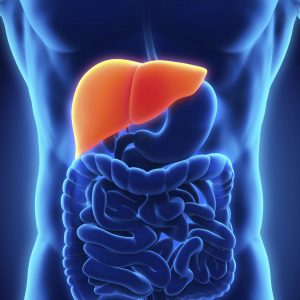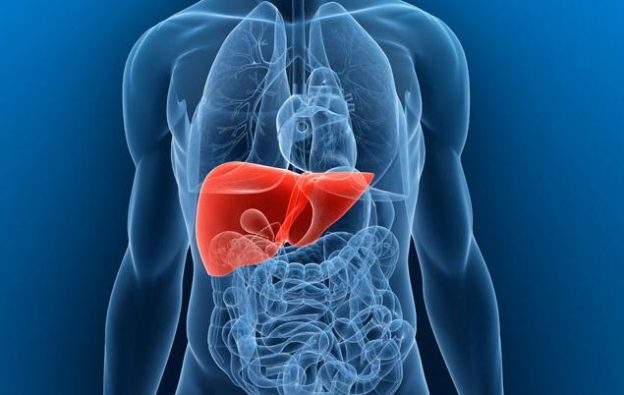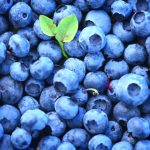The liver is a resilient organ that is capable of recovering from damage, until it doesn’t. Liver damage progresses through several stages and the final destination is cirrhosis/complete liver failure. There are well established clinical risk factors which lead to liver damage. Most of the public is well aware that alcohol can lead to liver failure in the long term. Viral etiologies are another big cause, specifically hepatitis C and hepatitis B. The latter is mainly an issue in certain 3rdworld countries where vaccines aren’t as accessible. Autoimmune disease, which encompasses several illnesses, is a less common but still established cause for liver failure. Drug induced liver damage is another big category and can vary depending on the drug and dosage. For example, overdoses of acetaminophen lead to acute liver failure yet appropriate doses do not. In contrast, certain drugs candamage the liver (though won’t necessarily) even at appropriate doses.
In order to better understand how all of this works, background information is necessary.
What is the liver and what does it actually do?
The liver is a relatively large organ in the right upper quadrant of the abdomen which serves to detoxify metabolites and produce chemicals for digestion. It is also a vital organ for overall metabolism, particularly since it produces bile which is needed to digest fats [1].

What are the stages of liver disease?
This will depend on whether the overall process is acute or chronic.
Acute:Widespread and sudden necrosis aka cell death.
Chronic:Progression from fatty deposits in the liver and liver enlargement to the development of scar tissue taking over the liver [2].
Known Causes of Liver Damage & Failure
- Drug-induced liver damage (includes anabolic steroids)
- Alcohol induced liver damage
- Hepatitis infection (B & C, with C being far more prevalent)
- Hemochromatosis (excess iron in the body)
- Wilson’s disease (excess copper)
- Alpha-1 Trypsin deficiency (may cause simultaneous lung failure)
- Primary biliary cirrhosis (autoimmune)
- Primary sclerosing cholangitis
- Viral etiologies besides hepatitis
- Toxins
Anabolic Steroid Induced Liver Damage
Liver toxicity and damage from Anabolic Androgen Steroids (AAS) tends to mainly (but not exclusively) occur from using 17-a methylated oral steroids. The degree of toxicity and potential damage is dependent on the specific agent being used, the dosage, total duration and other general risk factors. The use of Halotestin for example would be very toxic whereas Dianabol could be potentiallyless toxic but be prone to greater abuse and hence lead to damage. And while prolonged use of oral steroids (without stopping) are uncommon, high dose usage is rampant among untested strength athletes. Powerlifters will frequently utilize incredibly high doses of Dianabol or Anadrol prior to a meet and thereby induce significant levels of liver toxicity in that time span. It is unclear what the clinical consequences are from short term use of very high doses.
The level of complications vary from person to person. Transient rise in liver enzymes is quite common and these tend to return to baseline once the usage is stopped. Persistent cycling can potentially lead to cholestatic liver damage and scar formation. Though the incidence of this is not well established in literature (due to lack of human studies) and may be highly variable from individual to individual. Cholestasis may also develop as well as jaundice. However, that is less predictable in terms of the dose and agent. Another unique complication of AAS is peliosis hepatis, the development of blood filled cavities within the liver. Lastly, hepatocellular carcinoma is on the list of long term complications of oral AAS use and this type of cancer carries a very high mortality rate.
Overall, the toxicity and damage from oral 17a anabolic steroids is unpredictable. The outcome in one individual could be benign and there could zero negative signs (ex. no elevation of liver enzymes) whereas another individual could develop a scar in their liver from a couple of cycles. It is likely that chronic risk factors (ex. regular alcohol consumption, hepatitis C, etc.) will negatively affect the probability. The best recommendation is to avoid the anabolic steroids or at least take care of other health issues (including alcohol consumption) that are affecting the liver [3,4,5].
What are the symptoms of liver damage and failure?
Obviously, this will be highly variable. Acute liver failure is often asymptomatic in the initial stages but then quickly progresses to jaundice, abdominal pain, bruising and altered consciousness. Chronic liver failure will be asymptomatic for a long period of time before symptoms begin. Ultimately, the symptoms are quite similar to acute failure but with the development of cirrhosis, one can also experience a swollen abdomen, infection, swollen legs and fluid collection in the abdomen (ascites).
Lab Tests and Diagnostics
There are different lab tests that are used to screen/assess/work up the liver; for both its structural and functional status. These tests are AST, ALT, ALP, GGT, albumin, serum globulin, bilirubin (total/direct/indirect), prothrombin, partial thromboplastin time and serum proteins. Certain general patterns exist, for example a 2:1 AST to ALT is common in alcoholic liver disease whereas minor and persistent ALT elevation is typical of fatty liver disease. Extreme elevations (over 1000) in liver enzymes are common in acute hepatitis infection (ex. hepatitis A) but these are transient and return to normal once the acute stage ends.
Of course, other imaging tests such as ultrasound or MRI/MRCP or even ERCP can be done to diagnose other etiologies of liver disease.
Treatment Options
This one is highly dependent on the root cause of the liver damage. At this point, a biopsy may be done to establish a definitive cause if it is unknown. If the liver is not fully damaged, then elimination of risk factors + medical management is the go to option. Complete liver failure requires a transplant.
How do you prevent liver disease and promote liver health?
The big question that everyone wants answered, how to do we optimize our liver health? Fortunately, we have evidence to draw from in order to gain a better understanding. Of course, the first steps are to live a healthy lifestyle and avoid risk factors.
TUDCA (tauroursodeoxycholic acid)
An evidence-based compound that can be used to treat cholestasis. TUDCA is a water soluble bile salt that protects the liver cells from damage due to the excessive and stagnating bile. It also protects the cells from any excessive stress. TUDCA has been shown to significantly reduce liver enzymes and induce liver regenesis.
However, expert opinion is mixed on TUDCA and some literature exists which shows no difference in overall outcomes. More evidence is needed to reach a major clinical conclusion in terms of treating actual hepatic illness. But current evidence does show that low to moderate dosages are hepatoprotective overall.
Side effects:Minimal side effects reported in literature, but mild diarrhea may infrequently occur. High doses can be damaging to the liver.
Coffee
Promising literature has come out in recent years in support of coffee for the improvement of overall health. This has included liver health, specifically for fatty liver disease. It appears that coffee raises the antioxidant capacity of the liver and decreases fatty infiltration. There is very strong literature as of 2019 which shows significantly improved liver health in all of the major types of liver disease. As well, this has held equally true for preventative measures for other conditions. Coffee has also shown to carry a broad range of health benefits that go well beyond liver health [6].

Moral of the story is, if you aren’t a coffee drinker then you should start tomorrow.
NAC (N-acetyl cysteine)
NAC is used to treat acetaminophen overdoses. Very high doses are used (either oral or intravenous) for that purpose. The general effect is that NAC will increase glutathione stores in the liver so that it can continue detoxifying toxins. For the purposes of supplementation, the typical doses per pill are often 600mg or 1000mg with most users taking 600-2000mg daily [7].
Side effects:Some people experience nausea, likely due to the sulfur. Chronic long term use is also discouraged due to a potential decrease in glutathione following ceasing the use of NAC.
Milk Thistle
An interesting supplement with mixed literature. It may have some benefits and likely increases glutathione storage to a degree. Seems like the hepatoprotection is generally only after the liver has faced a damaging compound (ex. liver toxic drug). In contrast, some believe it negatively affects the androgenic receptors but there is no evidence that this occurs in a clinically significant matter [8].
Side effects:No reported side effects in literature.
Liv 52
There may be some hepatoprotective properties to Liv 52, but it may only be limited to a post-liver injury timeline and/or in cirrhotic patients. There is not enough evidence to suggest that generally healthy people would benefit from Liv 52 supplementation. However, those regularly consuming alcohol or taking oral 17-a methylated anabolic steroids could potentially benefit from this [9,10,11].
Betaine
While there had been a little bit of evidence in favor of betaine; there is consistent evidence overall that betaine does not improve liver health. Though it can have many other potential benefits.
Spirulina
A type of blue-green algae which has accumulated some evidence for its ability to decrease liver fat and also lower liver enzymes. More evidence is needed to reach a conclusion [12].
Among the many benefits of garlic are its improvement of liver health. Though a minor benefit, it has been shown to lower liver enzymes.
Other:While more solid literature is required, choline and inositolhave been tied to improved liver health.
Conclusion
The liver is a critical organ and also a resilient one. Unfortunately, many lifestyle habits can harm it both acutely and chronically. There is now growing literature in favor of dietary habits (coffee) that can improve liver health. However, supplements always carry controversy. Currently the evidence has voted in favor of 2 supplements.
- TUDCA– There is well rounded evidence that moderate use of TUDCA has a spectrum of benefits for the liver and is safe to use in the vast majority of cases. Long term use has not been studied though.
- NAC– Increasing glutathione levels in the liver will undoubtedly be beneficial for the liver given its core function. Short term use is well tolerated (aside from mild nausea) but long term use is discouraged as glutathione production can become impaired.
It’s no surprise that TUDCA and NAC are the two supplements which are used clinically at times. Readers may be surprised that milk thistle is ranked as a top evidence based supplement, and that is because its benefits are not well established in literature. It seems that it is primarily beneficial during the “post-liver injury” phase if used acutely. Other supplements, such as Liv 52 or choline/inositol, have the physiologic and/or anecdotal evidence but lack peer reviewed literature. More data and literature are needed to consider them somewhat evidence based.
Disclaimer: The content in this article is strictly for general education purposes only and it does not support or promote the use of any supplement or drug.
References:
- https://www.webmd.com/digestive-disorders/picture-of-the-liver
- Angulo, P. (2002). Nonalcoholic fatty liver disease. New England Journal of Medicine, 346(16), 1221-1231.
- Hartgens, F., & Kuipers, H. (2004). Effects of androgenic-anabolic steroids in athletes. Sports medicine, 34(8), 513-554.
- Hall, R. C., & Hall, R. C. (2005). Abuse of supraphysiologic doses of anabolic steroids. Southern medical journal, 98(5), 550-555.
- Štimac, D., Milic, S., Dintinjana, R. D., Kovac, D., & Ristic, S. (2002). Androgenic/Anabolic steroid-induced toxic hepatitis. Journal of clinical gastroenterology, 35(4), 350-352.
- Heath, R. D., Brahmbhatt, M., Tahan, A. C., Ibdah, J. A., & Tahan, V. (2017). Coffee: The magical bean for liver diseases. World journal of hepatology, 9(15), 689.
- Khoshbaten, M., Aliasgarzadeh, A., Masnadi, K., Tarzamani, M. K., Farhang, S., Babaei, H., … & Najafipoor, F. (2010). N-acetylcysteine improves liver function in patients with non-alcoholic Fatty liver disease. Hepatitis monthly, 10(1), 12.
- Abenavoli, L., Capasso, R., Milic, N., & Capasso, F. (2010). Milk thistle in liver diseases: past, present, future. Phytotherapy Research, 24(10), 1423-1432.
- Huseini, H. F., Alavian, S. M., Heshmat, R., Heydari, M. R., & Abolmaali, K. (2005). The efficacy of Liv-52 on liver cirrhotic patients: a randomized, double-blind, placebo-controlled first approach. Phytomedicine, 12(9), 619-624.
- De Silva, H. A., Saparamadu, P. A. M., Thabrew, M. I., Pathmeswaran, A., Fonseka, M. M. D., & De Silva, H. J. (2003). Liv. 52 in alcoholic liver disease: a prospective, controlled trial. Journal of ethnopharmacology, 84(1), 47-50.
- Sandhir, R., & Gill, K. D. (1999). Hepatoprotective effects of Liv-52 on ethanol induced liver damage in rats.
- Ferreira-Hermosillo, A., Torres-Duran, P. V., & Juarez-Oropeza, M. A. (2010). Hepatoprotective effects of Spirulina maxima in patients with non-alcoholic fatty liver disease: a case series. Journal of medical case reports, 4(1), 103.







